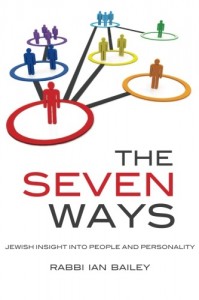What Love is and Why We Read a Passionate Book on Passover
Printable PDF: What is Love Pesach and Shir HashirimIn the early 1970s, a young psychologist named Zick Rubin set out to answer a question that thousands of poets and philosophers had asked before him: What is Love?
Rubin developed an extensive questionnaire and began testing dozens of couples to see what qualities people relate to those they are  in love with. He set his eyes on such love-related topics as attachment, caring, and intimacy.
in love with. He set his eyes on such love-related topics as attachment, caring, and intimacy.
Over time, two distinct feelings organically emerged from his data: loving and liking. The questions that relate to the two feelings are distinctly different. Do you often gaze into their eyes? That would be someone you are in love with. Do you think someone is a likeable person? Chances are you are “in like” with them. If you are lonely and this person comes to mind, chances are it is love (as opposed to thinking of a friend you want to hang out). Do you think they have good judgment and are intelligent? That’s liking. And so on, and so forth. By seeing what items people relate to those they are in love with, Rubin was able to qualify love, from a scientific, social psychologist’s point of view.
Can We Love Someone We Don’t Like?
Low scores came back on the love scale for people who garnered high scores on the like scale. This makes sense. We don’t love, in the intimate sense, our friends or coworkers. What about the scores of liking for people we love? Surprisingly, there was only a modest relationship between the two (pun intended). You can feel romantic love for someone but not think that they are sufficiently courteous, pleasant, or particularly mature.
I think we’ve all seen this phenomenon at play in our school years or among our friends! (Not us of course…) People have a certain prototype that they prefer for intimate relationships (Hendrix 1988, Bailey 2011, McGoldrick, Carter, & Garcia-Preto, 2011), but the person may not always be described as particularly pleasant or a high-quality individual. Rubin’s data suggest that we can, indeed, love someone who we don’t like.
What is Love?
Love is, of course, a complex emotion. Reducing the euphoric feeling to a soul-less technical definition is much like hugging the  proverbial rabbit too tightly-you’re injuring the soft little bunny. Love has a purpose and definition in and of itself; the state needs little justification and is not lacking without technical definition. The same is true, on a smaller scale, with liking someone. We feel positive feelings, which are true emotions of connection and happiness, and this is intrinsically meaningful. In this way, the bard’s prose gives sufficient meaning to this emotion.
proverbial rabbit too tightly-you’re injuring the soft little bunny. Love has a purpose and definition in and of itself; the state needs little justification and is not lacking without technical definition. The same is true, on a smaller scale, with liking someone. We feel positive feelings, which are true emotions of connection and happiness, and this is intrinsically meaningful. In this way, the bard’s prose gives sufficient meaning to this emotion.
Squeezing the Bunny
At the same time, it’s important to note that the psychological mechanism that love executes is an incredibly important part of the creation of a deep relationship.
Before marriage, when a couple falls in love, they have two biobehavioral systems are activated: romance and the desire for intimacy. These feelings are real and true feelings in and of themselves. From a functional point of view, they draw a couple together to set up the stage for marriage and the full connection therein.
Interestingly, after marriage, the feelings from these two biobehavioral systems wane and the next connection that needs to be created  is called attachment. As it sounds, it is an emotional connection that bonds a couple together. This attachment can feel positive, but it is not likely to be as incredible as the other two feelings. The other feelings return only commensurate with the couple’s attachment. This means that romance and desire only exist based on the health of the couples’ attachment. Unlike media and entertainment portray, people do not become connected because they share incredible experiences together—it’s quite the opposite. People share incredible experiences together because they have become connected.
is called attachment. As it sounds, it is an emotional connection that bonds a couple together. This attachment can feel positive, but it is not likely to be as incredible as the other two feelings. The other feelings return only commensurate with the couple’s attachment. This means that romance and desire only exist based on the health of the couples’ attachment. Unlike media and entertainment portray, people do not become connected because they share incredible experiences together—it’s quite the opposite. People share incredible experiences together because they have become connected.
[see the full post on romance & the first year of marriage]
Love is something that forges the initial connection between people[1] and is the hope that flashes before our eyes when difficulties arise; love is the ongoing sensation that unites, regardless of the physical distance. It is romance, desire and connection. Love is manifest as technical, but is meaningful in and of its self.
Why Do We Read a Romantic Book on Passover?
On Passover, the custom of many communities is to read Song of Songs (Shir HaShirim) in the synagogue. To say that we read this book because it describes passion and that this is a time of passionate love with G-d is a simplistic words connection that does not truly explain the deep underlying messages behind the custom.
One of the reason synagogues read the book is that it describes the passion that King Solomon feels towards G-d, as reflected by the intimate statements that he penned in his name and in the name of Israel. The book is describing not only his raw feelings of love, but  the wonderful feeling of connection[2] and desire to connect more; it depicts, through metaphors of passion, the ongoing relationship[2] that is possible and desirous for us to maintain with G-d.
the wonderful feeling of connection[2] and desire to connect more; it depicts, through metaphors of passion, the ongoing relationship[2] that is possible and desirous for us to maintain with G-d.
Solomon has extremely positive feelings about G-d, and these feelings are parallel to the feelings that Israel feels when it initially connects with G-d, upon leaving Egypt and following G-d into the desert. Each Passover, and, for many, right before the Sabbath begins, people read this book in order to be reminded of the possibility of the depths of the relationship and reignite a spark that can lead to deeper involvement in religious pursuits.
[to learn more about how to get love you want order The Seven Ways]
May we delve into the customs of the season and the study of G-d’s wisdom, and may this bring us to deeper and passionate connection.
IB [1] Fond feelings of ‘liking’ would be the equivalent with friends. This is the source for the idea of a ‘bromance’. [2] It is beyond the scope of this article to fully define the idea of a connection or relationships with G-d. Briefly, some of the main elements included are studying G-d’s wisdom and G-d’s involvement in history, as well as conceptualizing his commitment to Israel. References: Bailey, I., (2011). The Seven Ways: Jewish Insight into People and Personality, Baltimore: Createspace. Hendrix, H. (1988). Getting the Love You Want. New York: Henry Holt. McGoldrick, M., Betty, C., and Nydia, G.P., (2011). The Family Life Cycle: Individual, Family, and Social Perspectives. Boston: Allyn and Bacon. Rubin, Z. (1970). Measurement of romantic love. Journal of Personality and Social Pscyhology. 16, 265-273. Rubin, Z. (1973). Liking and loving: An invitation to social psychology. New York: Holt, Rinehart & Winston.